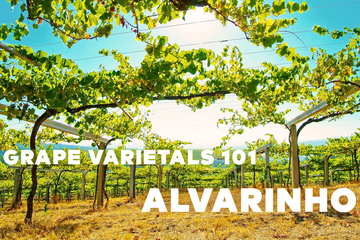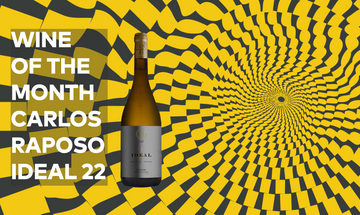Alvarinho: The Jewel of Iberian White Wines
Nestled in the lush, misty vineyards of northwestern Iberia, the Alvarinho grape variety—a treasure of the wine world—thrives with unassuming brilliance. Known as Alvarinho in Portugal and Albariño in Spain, this grape marks the confluence of history, climate, and craftsmanship. It is revered for its ability to produce some of the most aromatic and dynamic white wines, embodying the essence of its coastal terroir. As global recognition for Alvarinho continues to grow, its story unfolds like the wines it creates: layered, complex, and deeply satisfying.
A Varietal Rooted in History
Alvarinho’s roots trace back centuries to the verdant landscapes of
Alvarinho is a symbol of cultural pride. In Portugal’s Monção and Melgaço subregions, this grape is cherished not only for its distinct personality but also for its contribution to the evolution of Vinho Verde wines. While once relegated to blends, Alvarinho is now bottled on its own, delivering a pure expression of its remarkable character.
The Terroir Connection
In Rías Baixas, vines are predominantly trained on pergolas, reaching heights above the head. This traditional system promotes air circulation, enhances sun exposure, and historically allowed for the cultivation of other crops beneath the vines. While pergola training is occasionally seen in Vinho Verde, modern vineyards there tend to employ lower, more contemporary systems. Vinho Verde benefits from greater sunlight exposure, resulting in wines with slightly less natural acidity—a reflection of its warmer climate, which historically favored red wine production.
In Rías Baixas, malolactic fermentation is sometimes utilized, particularly in coastal areas, while it is almost never employed in Vinho Verde. Additionally, short periods of lees contact are common in Rías Baixas, contributing to the texture of its wines. Interestingly, the two regions present a paradox: despite Vinho Verde’s warmer climate, its wines often taste more acidic due to earlier grape harvesting and the absence of malolactic fermentation. Conversely, the cooler climate of Rías Baixas produces wines with greater weight and depth, influenced more by winemaking techniques.
A Stony Blend of Aromas and Flavors
What makes Alvarinho exceptional is its unrivaled aromatic complexity. A glass of Alvarinho wine unfolds like a sensory journey, with layers of citrus—zesty lemon and juicy lime—mingling effortlessly with the ripe sweetness of peach and apricot. Delicate floral notes of jasmine or orange blossom add an ethereal quality, while a whisper of salinity hints at its coastal origins. Beneath this bouquet lies a steely minerality, an unmistakable signature of its granitic soils.
On the palate, Alvarinho wines strike a harmonious chord. Their lively acidity balances with ripe fruit flavors, creating a texture that is simultaneously refreshing and substantial. Unlike some white grape varieties, Alvarinho is not simply a one-note refresher; it has the depth and structure to evolve gracefully, developing honeyed and nutty nuances with age.
Classicism vs. Modernity: Winemaking Styles
Alvarinho’s versatility in winemaking is one of its greatest assets. While most associated with dry white wines, the grape adapts to a variety of styles:
- Crisp, Dry Whites: The quintessential Alvarinho style is a vibrant, medium-bodied wine with a balance of zippy acidity and ripe fruit flavors. These wines are ideal for enjoying young and are a staple in seafood-centric cuisines.
- Oaked Expressions: Some winemakers experiment with oak aging, adding layers of vanilla, toast, and spice. These wines showcase the grape’s ability to take on complexity and pair with heartier dishes.
- Sparkling Wines: With its naturally high acidity, Alvarinho lends itself beautifully to sparkling wine production, creating effervescent options with a fine mousse and refreshing finish.
- Sweet Styles: Though rare, late-harvest Alvarinho wines bring an unexpected twist, offering a luscious, honeyed sweetness balanced by the grape’s signature acidity.
Global Recognition and New Frontiers
While Alvarinho remains firmly rooted in its Iberian homeland, its reputation has crossed borders, inspiring winemakers in New World regions like California, New Zealand, and even Australia. Each new planting tells a different story, as the grape absorbs and reflects the nuances of its adopted terroir. In cooler climates, Alvarinho showcases its crisp, high-acid character, while warmer regions coax out its tropical fruit and richer textures. Bodegas Garzon, in Uruguay, have their Alvarinho as one of it's most highly acclaimed wines.
Despite its global expansion, the grape remains intrinsically linked to its Iberian heritage. Wines labeled as “Alvarinho” in Portugal or “Albariño” in Spain carry an implicit promise of authenticity, craftsmanship, and a deep connection to the land.
Pairing Possibilities: A Culinary Dream
Alvarinho’s food-friendly profile makes it a darling of sommeliers and home cooks alike. Its bright acidity and aromatic complexity allow it to complement a wide range of dishes:
- Seafood Staples: From oysters to grilled octopus, Alvarinho elevates the natural brininess of seafood, making it a natural fit for coastal cuisines.
- Light, Herbaceous Dishes: Think salads with citrus dressings or fresh goat cheese; the wine’s zesty character enhances these flavors effortlessly.
- Spicy Fare: The aromatic intensity of Alvarinho provides a counterpoint to the heat and spice of Asian dishes, especially Thai and Vietnamese cuisine.

Conclusion: A Grape of Timeless Appeal
Alvarinhos´ story is one of resilience, adaptation, and artistry. Its ability to balance freshness with complexity has made it a favorite among wine enthusiasts and a benchmark for white wine excellence. Whether sipped on a sunny patio in Portugal or paired with a gourmet meal halfway around the world, Alvarinho captures the spirit of its origins while transcending borders. For those seeking a wine that offers elegance, versatility, and a true sense of place, Alvarinho delivers—bottle after bottle.









